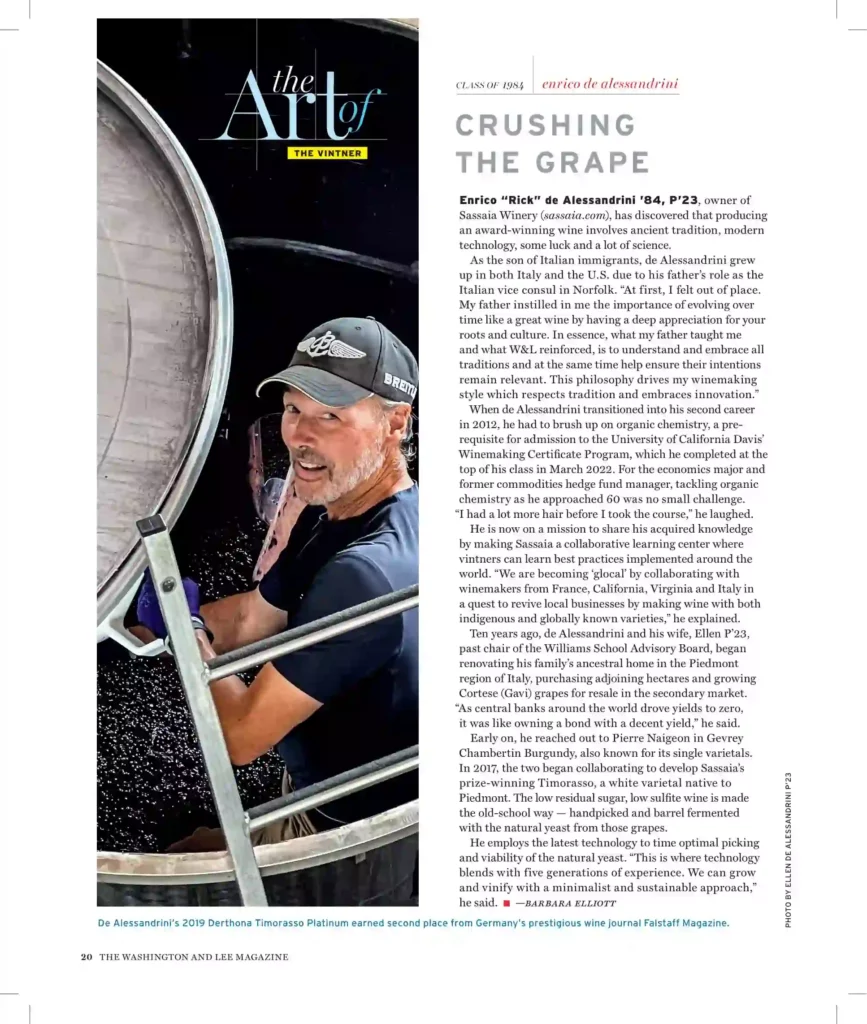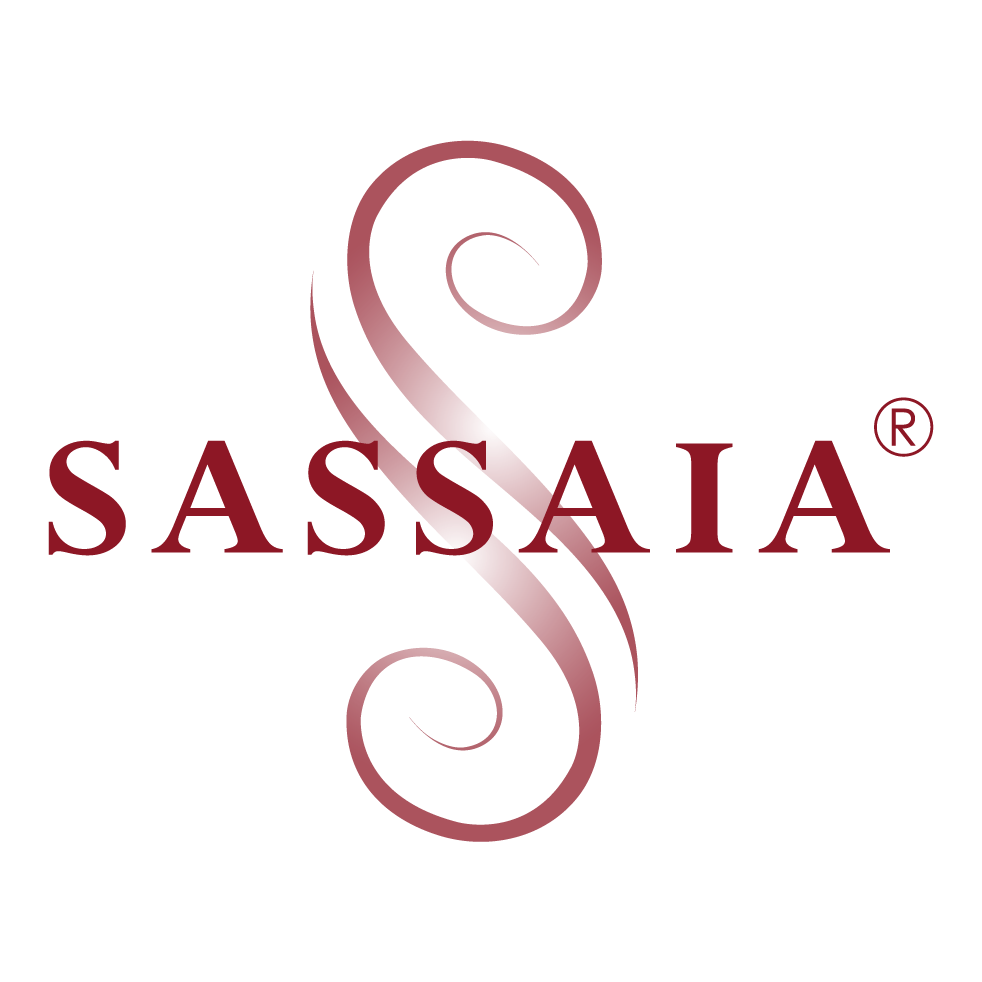Enrico “Rick” de Alessandrini ’84, P’23, owner of Sassaia Winery (sassaia.com), has discovered that producing an award-winning wine involves ancient tradition, modern technology, some luck and a lot of science.
As the son of Italian immigrants, de Alessandrini grew up in both Italy and the U.S. due to his father’s role as the Italian vice consul in Norfolk. “At first, I felt out of place. My father instilled in me the importance of evolving over time like a great wine by having a deep appreciation for your roots and culture. In essence, what my father taught me
and what W&L reinforced, is to understand and embrace all traditions and at the same time help ensure their intentions remain relevant. This philosophy drives my winemaking style which respects tradition and embraces innovation.” When de Alessandrini transitioned into his second career in 2012, he had to brush up on organic chemistry, a pre- requisite for admission to the University of California Davis’ Winemaking Certificate Program, which he completed at the top of his class in March 2022. For the economics major and former commodities hedge fund manager, tackling organic chemistry as he approached 60 was no small challenge.
“I had a lot more hair before I took the course,” he laughed. He is now on a mission to share his acquired knowledge
by making Sassaia a collaborative learning center where vintners can learn best practices implemented around the world. “We are becoming ‘glocal’ by collaborating with winemakers from France, California, Virginia and Italy in a quest to revive local businesses by making wine with both indigenous and globally known varieties,” he explained.
Ten years ago, de Alessandrini and his wife, Ellen P’23, past chair of the Williams School Advisory Board, began renovating his family’s ancestral home in the Piedmont region of Italy, purchasing adjoining hectares and growing Cortese (Gavi) grapes for resale in the secondary market.
“As central banks around the world drove yields to zero, it was like owning a bond with a decent yield,” he said.
Early on, he reached out to Pierre Naigeon in Gevrey Chambertin Burgundy, also known for its single varietals. In 2017, the two began collaborating to develop Sassaia’s prize-winning Timorasso, a white varietal native to Piedmont. The low residual sugar, low sulfite wine is made the old-school way — handpicked and barrel fermented with the natural yeast from those grapes.
He employs the latest technology to time optimal picking and viability of the natural yeast. “This is where technology blends with five generations of experience. We can grow and vinify with a minimalist and sustainable approach,” he said. n —barbara elliott
De Alessandrini’s 2019 Derthona Timorasso Platinum earned second place from Germany’s prestigious wine journal Falstaff Magazine.


